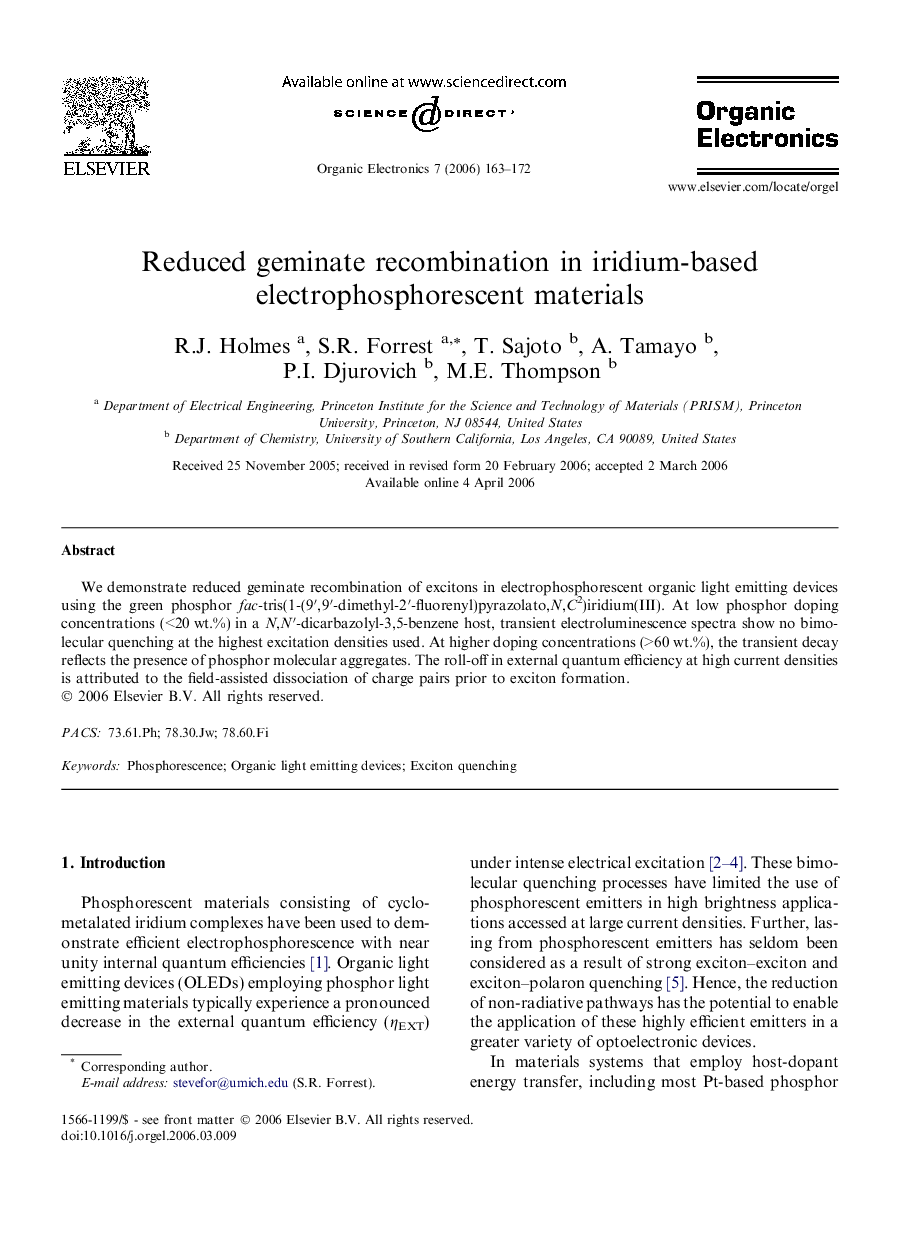| Article ID | Journal | Published Year | Pages | File Type |
|---|---|---|---|---|
| 1265803 | Organic Electronics | 2006 | 10 Pages |
Abstract
We demonstrate reduced geminate recombination of excitons in electrophosphorescent organic light emitting devices using the green phosphor fac-tris(1-(9′,9′-dimethyl-2′-fluorenyl)pyrazolato,N,C2)iridium(III). At low phosphor doping concentrations (<20 wt.%) in a N,N′-dicarbazolyl-3,5-benzene host, transient electroluminescence spectra show no bimolecular quenching at the highest excitation densities used. At higher doping concentrations (>60 wt.%), the transient decay reflects the presence of phosphor molecular aggregates. The roll-off in external quantum efficiency at high current densities is attributed to the field-assisted dissociation of charge pairs prior to exciton formation.
Related Topics
Physical Sciences and Engineering
Chemistry
Chemistry (General)
Authors
R.J. Holmes, S.R. Forrest, T. Sajoto, A. Tamayo, P.I. Djurovich, M.E. Thompson,
